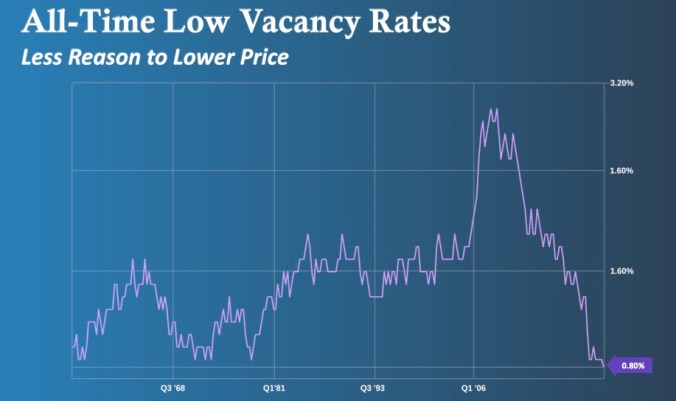Current housing data suggests that the likelihood of a “housing bubble” or market correction is extraordinarily unlikely, as there’s far more demand than supply for housing.
That’s not what many are hearing from the media sirens out there, but the numbers tell the true story.
Data also shows that there are more households being formed than homes being built. That means demand will continue to be higher than supply moving forward.

This data seems to strongly imply that housing prices will not be going down in the near future, although the rate of appreciation will be slower than in 2020 through 2022.
Housing Starts and Permits
Housing Starts in January were down 4.5% to a 1.3M unit annualized pace. Starts are down 21% year-over year…and single-family starts were down 4.3% last month at a 840K pace. Single family starts are down 27% year-over-year.
Housing permits, which is the future supply, were up 0.1% last month at a 1.34M unit pace and are down 27% year-over year. Single family permits are down a whopping 40% year-over-year.
Consider this…new household formations for 2023 are estimated at 1.9M and with builders building 1.3M homes (annualized), there doesn’t appear to much vacancy available. This means tighter supply and increased demand…which means home prices should increase.
Also, permits are the future supply…and with permits at 1.34M compared to 1.9M in household formations. This means supply will remain very tight and should be well below demand, further supporting home prices.
Housing Prices Today
Looking at national data, Nataliya Polkovnichenko, Ph.D., Supervisory Economist at the Federal Housing Finance Agency (FHFA), explains:
“U.S. house prices were largely unchanged in the last four months and remained near the peak levels reached over the summer of 2022. While higher mortgage rates have suppressed demand, low inventories of homes for sale have helped maintain relatively flat house prices.”
Month-over-month home price changes can be seen in the chart below. The data also shows that price depreciation peaked around August. Since then, any depreciation has been even milder.
In other words, today’s home prices aren’t in some sort of downward free fall that we hear about through many media outlets – and there appears to be no market correction on the horizon.
In Conclusion
Many are attempting right now to time the market, thinking that home prices are in for a big drop, but that clearly isn’t the case…nor is that a good strategy.
Selma Hepp, Chief Economist at CoreLogic, shares:
“. . . while prices continued to fall from November, the rate of decline was lower than that seen in the summer and still adds up to only a 3% cumulative drop in prices since last spring’s peak.”
And when you consider the shortages in inventory and the increases in household formations, I’m confident that there will be upward pricing pressure for buyers very soon.
For a deeper dive on this, you can also find my 2023 Housing and Mortgage Forecast here…
Would you like to learn more? Contact me to discuss your current situation and how you might be able to take advantage in today’s environment. It would be my pleasure to help you!















